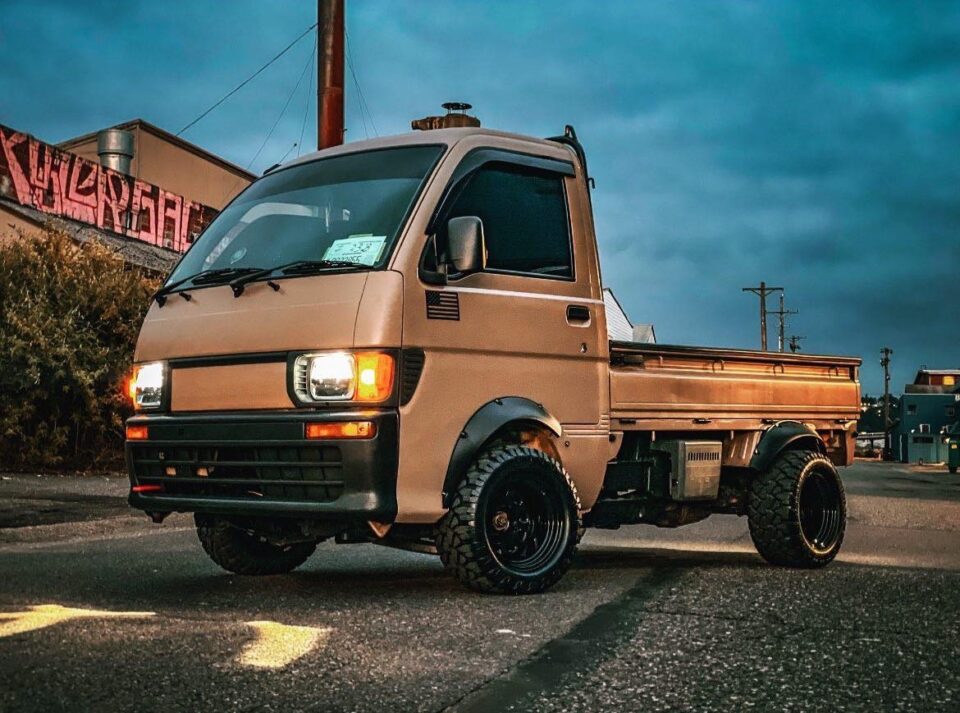Kei cars are miniature, lightweight vehicles that have grown to be an important part of Japanese culture and daily life. Engineered to traverse the narrow roads and tight spaces of Japan, these mini trucks represent the perfect blend of utility and efficiency. With their unique size, kei trucks have found their way in various sectors, from farming to transportation, making them indispensable for many small businesses and local farmers.
The kei truck's charm lies not just in its practicality but also in its adaptability. With a load capacity that makes them suitable for carrying substantial loads despite their size, they serve a variety of purposes. From transporting goods to offering a reliable mode of travel for urban travelers, kei trucks showcase how smart engineering can meet the needs of a crowded society. Their presence has significantly shaped the way people in Japan deal with transportation and trade, proving that occasionally, major effects come in compact forms.
History of Kei Trucks
Kei vehicles originated in Japan during the aftermath of World War II era, a time when there was a pressing need for cost-effective and functional vehicles. The government of Japan sought to stimulate the economy and make transportation accessible to a greater number of citizens. In 1949, the kei car classification was created, which set specific size and engine capacity limits for vehicles. This initiative led to the development of kei trucks, defined by their small size and effective design.
Throughout the 50s and 60s, kei trucks became popular among local entrepreneurs and farmers. These vehicles offered a solution for hauling goods in cities and countryside alike. Their smaller dimensions allowed them to maneuver through narrow streets and tight spaces, which became increasingly important as cities grew and road congestion became an issue. Manufacturers like Suzuki Motor Corporation, Daihatsu, and Honda started to produce tailored models, addressing the specific requirements of their customers.
As Japan's economy flourished during the 1970s and 1980s, kei trucks turned into a representation of innovation and utility. They were not only used for commercial purposes but also adopted by regular people for personal use. The flexibility of kei trucks enabled them to adapt to various roles, from delivery vehicles to leisure use. This transformation solidified their place in the culture of Japan, making kei trucks an lasting element of the automotive landscape.
Cultural Significance
Kei vehicles hold a special place in the culture of Japan, reflecting the efficiency and creativity of the nation. To start, designed for commercial use, these compact trucks have become a representation of the ingenuity that characterizes life in Japan. Their compact size allows them to navigate narrow city streets and countryside paths, making them a regular presence across cities and countryside alike. This adaptability resonates with the beliefs of functionality that a lot of Japanese people hold precious.
In furthermore their practical applications, kei trucks are often linked to a sense of community. They are often used by small enterprises, farmers, and service providers, enabling the exchange of goods and services on a smaller scale. This encourages a culture of support among local vendors and consumers, reinforcing interconnectedness within communities. Furthermore, kei trucks have become popular for private ownership, with numerous individuals modifying them as a method of expression of individuality, contributing to their cultural significance.
Additionally, kei trucks have found their way into cultural phenomena, featured in various forms of entertainment, including cinema, animated series, and video games. This visibility has influenced perceptions of these vehicles beyond their utilitarian roots, raising them to a treasured icon within Japanese pop culture. As a result, kei trucks are not just vehicles; they represent a mix of cultural legacy and contemporary life, symbolizing the spirit of Japanese society and its developing identity.
Impact on Modern Japan
Kei trucks have deeply influenced many facets of modern Japan today. Their small size makes them ideal for navigating the tight streets of metropolitan areas where bigger vehicles would face challenges. As metropolitan regions continue to grow and traffic increases, kei trucks provide a practical solution for moving goods in crowded areas. This versatility not only helps individual users but also supports local businesses that depend upon efficient delivery and logistics services.

In addition to their utility, kei trucks contribute to a more environmentally friendly urban environment. Their smaller engines typically lead to better fuel efficiency and lower carbon output compared to big trucks. As Japan strives to reduce its greenhouse gas emissions and promote sustainable habits, kei truck s coincide with these objectives by offering an environmentally conscious option for both personal and commercial transportation. This commitment on sustainability resonates with a increasing multitude of consumers who prioritize sustainable choices.
The symbolic relevance of kei trucks extends past their usefulness. They represent a special aspect of Japanese innovation and adaptability, showcasing how a compact truck can fulfill diverse roles in everyday life. From farmers using them to transport goods in rural areas to businesses utilizing them for local transport, kei trucks embody the spirit of Japanese creativity. Their presence in media, including animated shows and community events, further reinforces their place as a beloved symbol of modern Japan.
